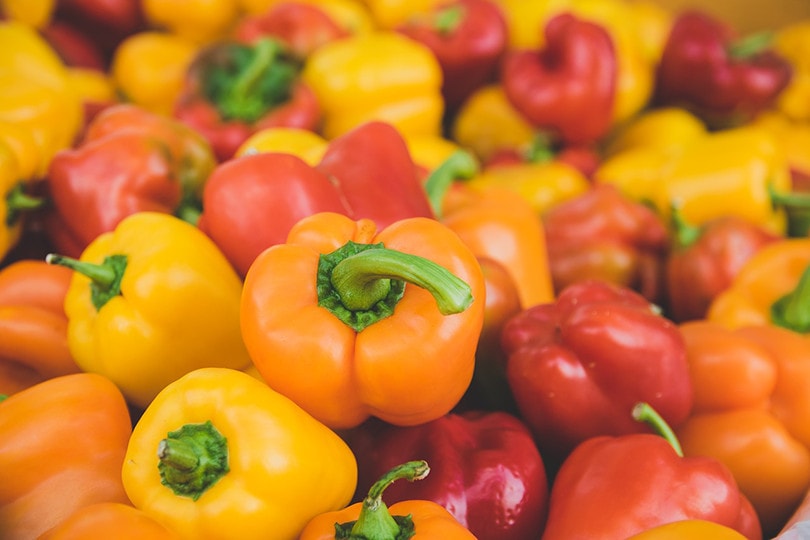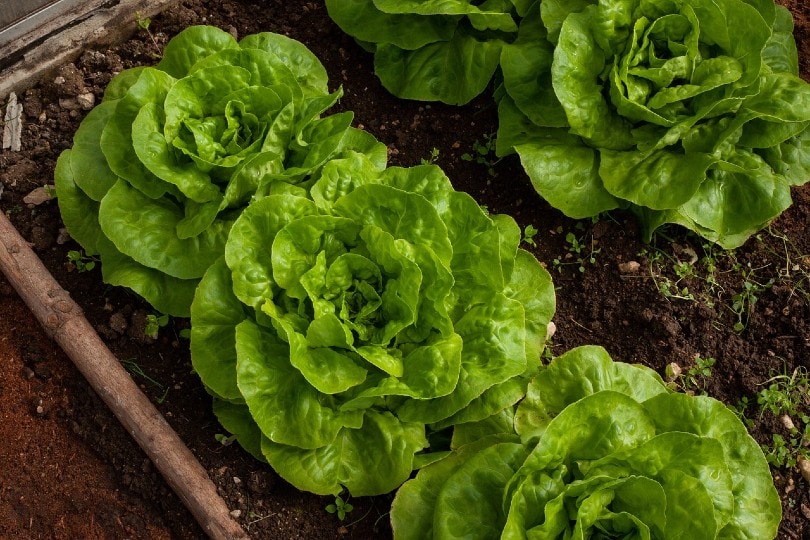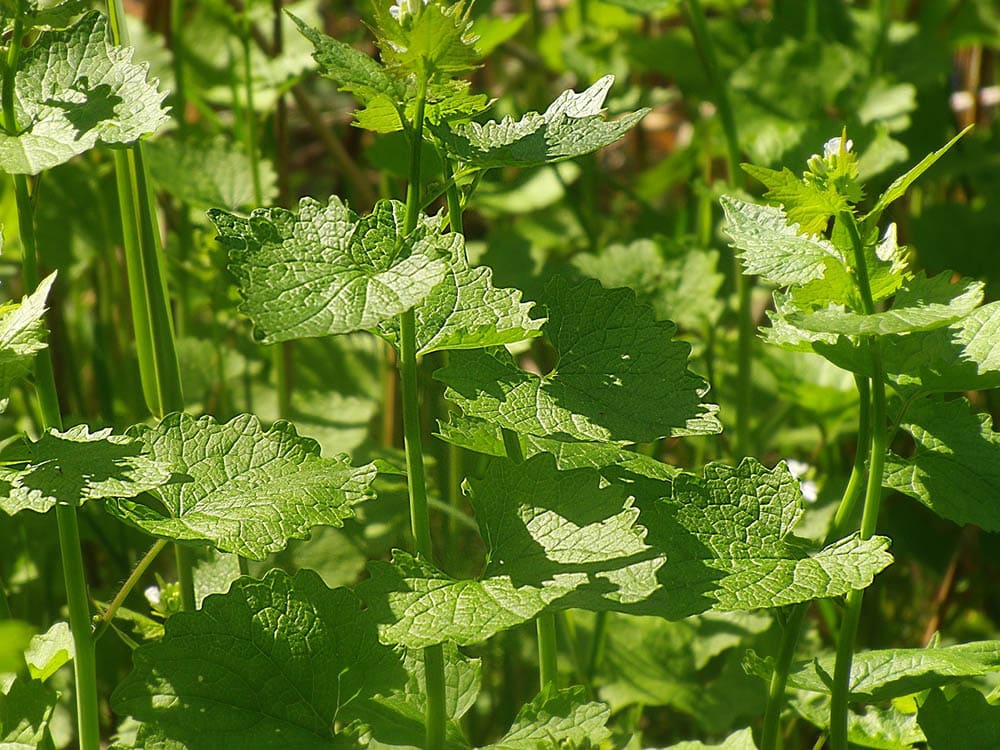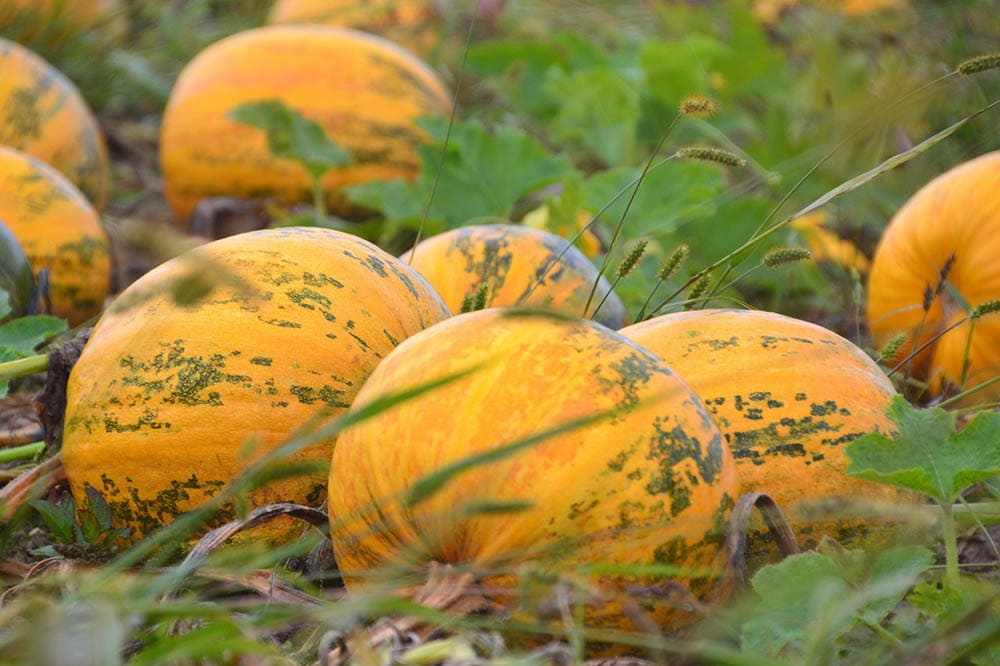10 Best Vegetables to Grow in Texas (With Pictures)
-
Pete Ortiz
- Last updated:

Gardening is one of the best ways to get outdoors and renew your connection with nature. Plus, there’s so much flexibility in the hobby; it requires as much or as little commitment as you want. Growing your vegetables, in particular, is a great way to supplement your groceries.
Many parts of Texas get very harsh during the summer, with little rainfall and scorching sunlight. On the other hand, winter temperatures can produce plant-killing frost, especially in Northern Texas. Starting and maintaining a vegetable garden in these conditions can be tricky, but it’s possible with dedication and patience. Let’s check out some of the best vegetables you can grow in Texas and how to care for them during various seasons.
 The 10 Best Vegetables to Grow in Texas
The 10 Best Vegetables to Grow in Texas
1. Carrots

| Season | Fall |
| Grow Time | 3-4 months (12-16 weeks) |
| Soil Type & pH | Loose soil, pH 6.0-6.5 |
| Water Requirements | 1” per week |
Carrots are a staple of any vegetable garden because they grow virtually year-round. The main thing to watch out for is whether your soil is suitable for carrots because they do best in loose, sandy soil. With heavier soils and clay, carrots struggle to break through the soil.
You can plant carrots any time from July to February, but they’re usually considered a fall crop. In most central and southern parts of Texas, you can grow carrots during the winter.
2. Peppers

| Season | Summer- Fall |
| Grow Time | 2-3 months (60-90 days) |
| Soil Type & pH | Loamy soil, pH 6.0-7.0 |
| Water Requirements | 1” per week |
What would Texas be without peppers? Peppers do very well in the Texas heat, from sweet bell peppers to spicier Jalapenos and Habaneros. Generally, they even do better as the temperature spikes. Peppers don’t survive in the cold, so avoid planting them in the fall and winter.
Peppers are low-maintenance crops and can be grown in nearly any garden. We’d recommend planting your peppers in July, but you can start as early as springtime if you want an early harvest. You don’t need to worry about spraying for bugs because peppers repel insects.
3. Okra

| Season | Spring |
| Grow Time | 50-65 days |
| Soil Type & pH | Loamy or sandy soil, pH 6.5-7.5 |
| Water Requirements | 1” per week |
Okra is a warm-season crop notable for its many uses in Southern cuisine, where it’s enjoyed fried and boiled. Okra generally does best above 85 degrees, which is ideally suited for Texas summers. For the best results, plant okra during the early spring in mid-April for a harvest in late June to early July.
Okra thrives with a lot of full sun and moderately moist soil. Because they have a relatively long growing time, it’s recommended to use compost or other fertilizer to maintain soil nutrients.
4. Lettuce

| Season | Fall |
| Grow Time | 30-60 days |
| Soil Type & pH | Loose soil, pH 6.0-7.0 |
| Water Requirements | 1” per week |
Loose leaf lettuce is the most-commonly-grown type of lettuce in Texas because it grows relatively fast, but many varieties do well throughout the state. Central Texas is the best climate for lettuce, but northern Texas is also suitable. It may get a bit too hot in the boiling south and make the lettuce bitter, but you can try to make it work if you wish!
Lettuce does best at temperatures around 75 degrees Fahrenheit, so we’d suggest starting around October to get a harvest in December and another in February. If you’re cautious about the increasingly cold Texas winters, start your seeds indoors about a month before you expect to have them transplanted outdoors.
5. Tomato

| Season | Summer |
| Grow Time | 2-3+ months (60-100 days) |
| Soil Type & pH | Loamy/sandy soil, pH 6.2-6.8 |
| Water Requirements | 1-2” per week |
While technically a fruit, tomatoes have a place in every veggie garden. Tomatoes take a bit of work to grow in Texas because of their specific preferences and short season. However, they thrive in central and southern Texas as long as you plan ahead.
Tomatoes will grow in cool conditions but won’t produce fruit until it gets 80 degrees, so you need to get them started early. We’d recommend starting your tomato plants in February so they’re ready to produce fruit during the early and mid-summer months.
6. Asparagus

| Season | Spring |
| Grow Time | 3 years |
| Soil Type & pH | Sandy soil, pH 6.5-7.0 |
| Water Requirements | 1-2” per week |
We’d recommend northern Texans try growing asparagus, which does well in colder temperatures and milder summers but not so well with sweltering humidity. The only caveat with asparagus is that you won’t see a harvest for as long as 3 years, but it keeps producing for over a decade if you can stick it out.
If you’re also growing potatoes, keep them away from your asparagus; potato growth is stunted when planted near asparagus. Similarly, you’ll want to keep asparagus away from allium veggies like onion, leek, and garlic because they stunt its growth.
7. Mustard Greens

| Season | Spring |
| Grow Time | 6 weeks |
| Soil Type & pH | Fertile soil, pH 6.5-6.8 |
| Water Requirements | 2” per week |
Like other leafy greens, mustard greens are cool weather crops that do very well in central and southern Texas falls and winters. You can try to grow them in northern Texas, but they don’t do well in freezing temperatures, even though they’re typically frost-tolerant.
Mustard greens are a great addition to any Texas fall garden. Start them in the spring if you want the seeds or during the fall for leafy greens.
8. Squash

| Season | Any |
| Grow Time | Varies by type |
| Soil Type & pH | Sandy soil, pH 6.0-6.5 |
| Water Requirements | 1” per week |
As a favorite of vermin everywhere, squash is an essential part of any vegetable garden. It is a known cross-pollinator that can enhance yields from other plants, like tomatoes, carrots, and cucumbers. It certainly doesn’t hurt that squash tolerates heat and cold very well.
Squash does well in any Texas climate, and you can start them in the spring for summer variants or in the fall so the plants can mature before the first frost. Zucchini is one type of squash that does well in the summer, whereas winter varieties include butternut and pumpkin.
9. Broccoli

| Season | Spring |
| Grow Time | 80-100 days |
| Soil Type & pH | Sandy/clay soil, pH 6.0-6.8 |
| Water Requirements | 1-1.5” per week |
Since it’s grown in cooler climates, broccoli is viable in central and northern Texas during the mild fall and late winter months. Ideally, you’d start broccoli from late September to early November, but you can wait until after February if you’re worried about frost.
Broccoli is the easiest of the cole veggie family to grow, while cauliflower is notoriously finicky. For a head start, start your broccoli seeds indoors during August to shield them from the sun or early February to avoid frost. Once the weather is nice and mild, you can transplant them to the garden for a harvest about 3 months later.
Related Read: 11 Best Vegetables to Grow in Ohio (With Pictures)
10. Cucumber

| Season | Summer |
| Grow Time | 50-70 days |
| Soil Type & pH | Sandy loam soil, pH 5.5-7.0 |
| Water Requirements | 1-2” per week |
Cucumbers are a versatile vegetable for pickling, cooking, or eating raw. We’re happy to report that cucumbers can be grown in any part of Texas, but it’s best to start them during the early spring. Sometimes they don’t do so well during intense Texas summers, so they might not thrive then.
Cucumbers grow on a vine and need a trellis, like green beans. This makes them great veggies to grow along a fence. We’d suggest planting cucumbers after the last frost of the year, in April. If you don’t have the space for a trellis, cucumbers also proliferate in small cages.
Conclusion
Although the weather in Texas can make gardening challenging, you can maintain a productive garden in your yard if you plant vegetables that can tolerate the conditions. Northern Texas experiences the coldest winters, and it’s better to avoid planting veggies like peppers that can’t handle frost or cold temperatures. However, lettuce will thrive in the northern climate. Heat-loving veggies can be planted anywhere in the state, but some may need to be watered more during particularly harsh summers.
Featured Image Credit: planet_fox, Pixabay
Contents

 The 10 Best Vegetables to Grow in Texas
The 10 Best Vegetables to Grow in Texas
